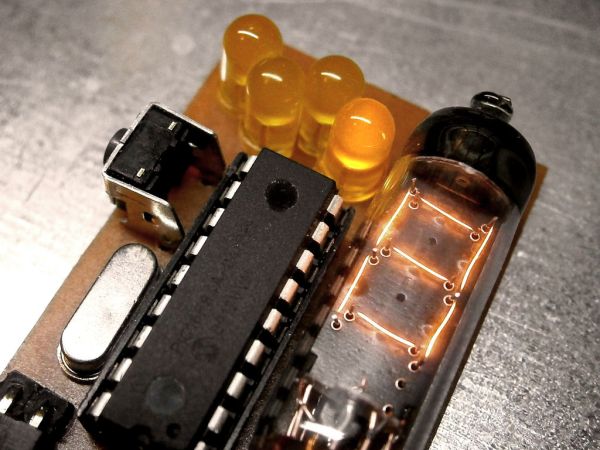Numitrons are neat display devices similar to nixie tubes but designed for much lower voltages. Numitrons are basically incandescent displays in which filaments create the segments.
They have a retro look that I liked so much. I bought 6x IV-9 Russian Numitrons in eBay, they were about 3$ each, they’re pretty cheap!
At that time I didn’t know what to do with them, but then I thought about a clock. Using software from a single LED display clock I made this impressive numitron clock.
Step 1: Program the PIC
The original purpose of the software was to drive a single common-anode LED display rather than a numitron, but either way works.
The software was modified to flash the digits so the HHMM LEDs wouldn’t be necessary. Also the software was modified so if the tens of hours is 0 then it is not displayed.
Moreover, the software does not check the input values so entering the wrong time such as 67:85 would be accepted, but eventually the clock will start resetting the digits correctly.
The clock operates off a PIC 16F84A using a program written by David Tait (software is further down this page). The crystal oscillator for the clock is a 4MHz crystal.
I think another microcontroller such as PIC16F628A could also work fine.
Step 2: The circuit
After testing on the breadboard, the clock works fine, with the current crystal the clock comes forward a minute each 3 days, with a precision one it can be solved, but it’s good enough for me; because setting time is easy.
You can see the test video below and download the eagle schematic to modify it.
Since numitron displays are just complex bulbs, it could be a problem to drive them from the processor, but in this case, it’s not a problem:
The PIC16F84A can source or sink 25mA per I/O pin.
But each port has a limit:
Maximum current sunk by PORTA-80 mA
Maximum current sourced by PORTA-50 mA
Maximum current sunk by PORTB-150 mA
Maximum current sourced by PORTB-100 mA
With IV-9/IV-16 each segment draws 20mA, but be careful if you choose another numitron!
For more detail: Single digit numitron clock

